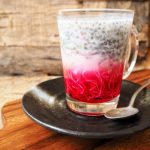
Ganjang is the Korean traditional fermented soy sauce which is a vital condiment for the preparation of authentic Korean meals and side dishes. Unlike Japanese soy sauces, Korean types have a well-balanced saltiness but little sweetness. The one to try is jinganjang (진간장) but given that so few have English labels I’ve relied on the shopkeeper to point out the best. This style of soy sauce was introduced from Japan and it’s relatively new to Korea unlike traditional gukganjang (국간장 or “soup soy sauce”) which has been used for thousands of years.
Manufacturing Method
Korean soy sauce is manufactured by traditional fermentation methods which have a similar processing culture to Japan. Each culture uses soy beans but the Koreans depart from this by adopting an additional long-term fermentation of the liquid element that comes from a mixture of doenjang-meju (fermented soybean bricks) and brine.
October is the traditional time for preparing the sauce. The soybeans are usually soaked overnight to remove bitter factors and then boiled. The soybeans are crushed and pounded to a powder and then compressed into a meju, which is a block of soy curd of about 15 by 20 centimetres (5.9 by 7.9 in), and dried for about one week. The mejus are then tied with straw and stored in front of the house – a traditional place of manufacture for about 40 days. After the mejus have dried sufficiently, they are placed in special ceramic ware where they begin to ferment. These bricks are prepared by soaking doenjang-meju in a molar salt solution (approximately 20% (w/v) NaCl) for 1 to 2 months. This helps develop the flavour until at the end of fermentation a dark liquid is formed. The liquid is called ganjang (soy sauce or soya sauce) which is filtered and separated from the remaining material called doenjang (soybean paste or bean paste).
Ganjang is used mainly as a dipping sauce or as a flavouring. Add only in sufficient quantities to impart a slight note to soups or sauces as required. No soy sauce is added that might unduly influence the colour of a broth, so light brown soy is preferred.


Leave a Reply